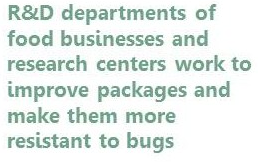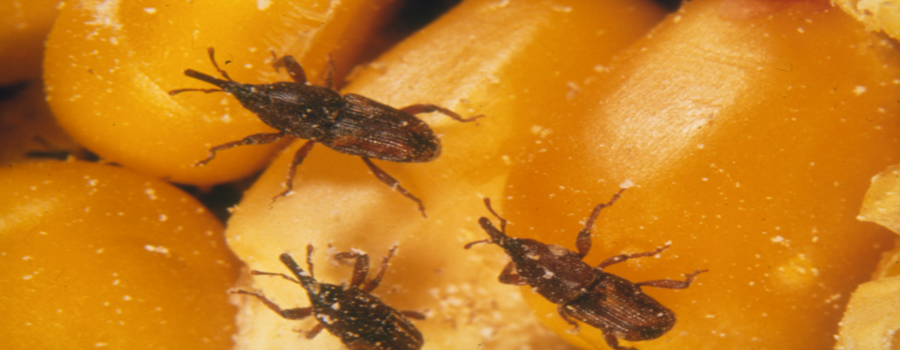Everybody has lived something like this. Open the pantry, take a packet of rice, flour or pasta and… insect! We find out that our foods are infected with bugs.
Insect contamination of stored food is a very annoying and worrying problem for consumers and for food companies. It involves high losses of raw materials and stored products, giving room to huge economic losses and damaging the image of the brand.
These animals are not pathogenic and do not represent a health problem for consumers, but the contaminated packet is discarded directly blaming the manufacturer, even without being responsible in the most cases.

The contaminating insects of stored products are diverse and attacks multitude of food: flour, rice, nuts, dried fruit, bread, cookies, pasta, etc. In Europe, there are approximately 300 million tons of grains which run the risk of contamination by pests during post-harvest treatment, storage and then, in food companies facilities (Stesjakl, V. 2014)
Raw materials and food companies face a big problem trying to control and remove of their facilities these arthropods, which find in silos and warehouse the perfect place to feed and reproduce. Companies use different methods of food insect contamination prevention, control and elimination in all their processes, in order to ensure that their products are free from any contamination. In addition, they must pass rigorous audits in which each process and corner of their factories are reviewed for this purpose.
However, once products leave the factory, the control over is very difficult. These insects live to feed and reproduce, so looking for food is their priority. Contamination by insects is much more susceptible during the transport process, during storage and at homes, despite all the measures.
These arthropods have an exceptional sense of smell and they are able to smell the food through packaging and packages, so they introduce themselves by any small hole or crack of the package. Besides, they are able to drill paper, cardboard and all kind of plastics (penetrator insects). For this reason, the R&D departments of food businesses, and research centers with which they work, are constantly innovating their packaging and seeking alternatives to improve them and make them more resistant to bugs.

As consumers, we must look at the supermarket if the packages have some sign of being damaged and, at home, we have to keep products in glass or metal. In addition, if we find out in our pantry some infected package, we must remove all products that may have been contaminated and proceed to clean it thoroughly.
From the point of view of researching, due to the increasing restrictions on the use of insecticides, such as methyl bromide or phosphine, they are conducting studies to replace these methods by others technologies less harmful and more friendly with environment, such as the use of pheromones or the use of extreme temperatures for cleaning and control plants.
In relation to packages, advances are aimed at the incorporation of repellent substances to deter insects attack. Last trials are aimed at the use of essential oil which, encapsulated and polyvinyl alcohol, could be printed as an ink onto polypropylene film and used as packaging material repellent to insects (Jo Hean-Joo, 2015)
With all these advances, it will be difficult to say ‘there is a bug in my pantry!’
- Fermentation, travel partner - 5 July 2024
- A pilot experience with a constructed wetland - 23 August 2018
- Plastic planet - 3 July 2018
